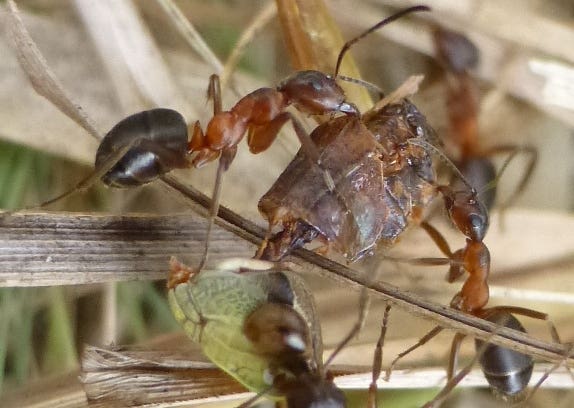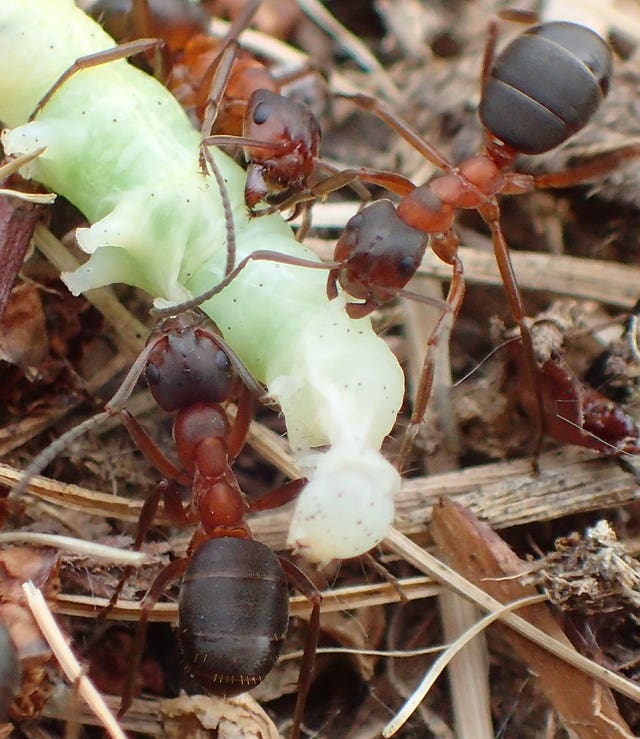A rare ant has been rescued from the brink of extinction with the help of some DIY conservation tools including garden equipment, old fish tanks and net curtains, experts said.
The fortunes of the endangered narrow-headed ant had fallen due to the loss of heathland habitat, to the point where there was only one site in England where its distinctive domed nests with roofs of nibbled grass could be seen.
But a project involving local volunteers, wildlife charities Buglife and Devon Wildlife Trust, Highways England and Paignton Zoo over the last three years has boosted the prospects of the ant in its remaining south Devon home.
Efforts have been made to create, restore, maintain and link up heathland habitats, and to survey and monitor the status and health of the ant population across 200 nest structures at Chudleigh Knighton, near Newton Abbot, the team said.

Cattle have been used to keep down vegetation which could shade the ants’ nests too much and smother the open heath.
The project also introduced narrow-headed ants (Formica exsecta) to former sites nearby at Bovey Heathfield and Teigngrace Meadow by carefully moving nests, in the hope they will establish and flourish there.
Nests were translocated with DIY equipment including garden tools such as trowels and wheelbarrows, scraps of roofing felt, old fish tanks and net curtains, while one large nest was moved using a borrowed mini-digger.
The moved ant nests received slices of apples as a housewarming gift to provide them with sugar.

Signs the ants have settled in will be when they are seen exploring for aphids and collecting their honeydew, and venturing out further to forage for insects, carrion and nest material, the conservationists said.
The scheme is part of the Back from the Brink project by a national coalition of conservation agencies to rescue a number of threatened species and habitats and in doing so improve the fortunes of hundreds of others.
Back from the Brink project officer for Buglife Stephen Carroll said: “I’ve been engaged with the plight of Formica exsecta for 18 years.
“I saw the last nest succumb and die out at its penultimate site in 2004.
“It’s great to see the first significant steps to recovery, which might have been our last chance, and just in time.”




Comments: Our rules
We want our comments to be a lively and valuable part of our community - a place where readers can debate and engage with the most important local issues. The ability to comment on our stories is a privilege, not a right, however, and that privilege may be withdrawn if it is abused or misused.
Please report any comments that break our rules.
Read the rules here